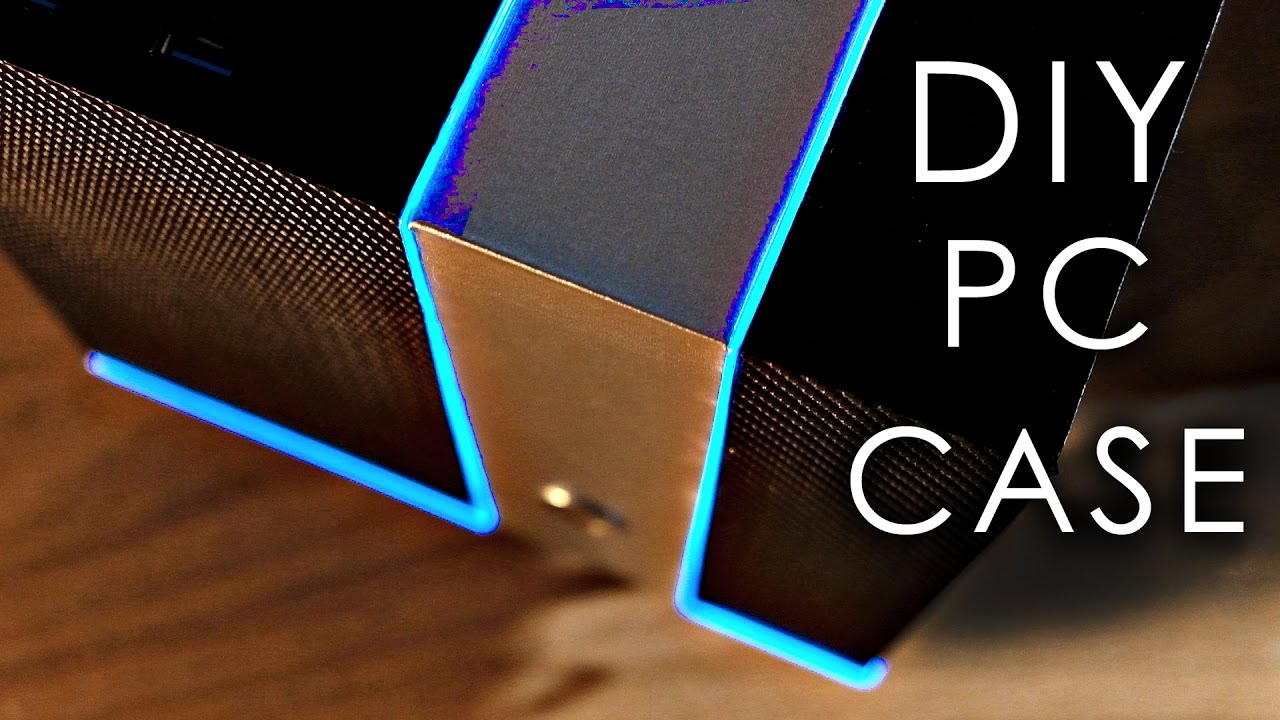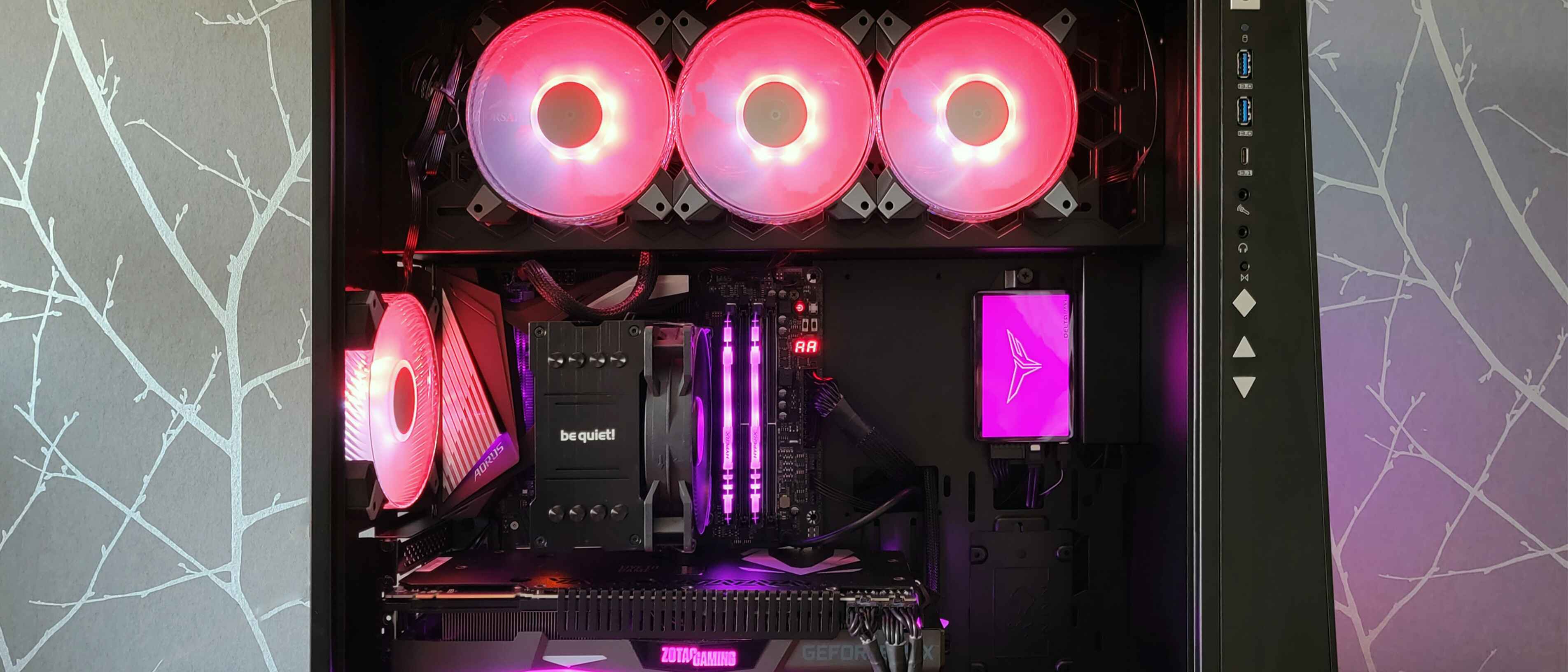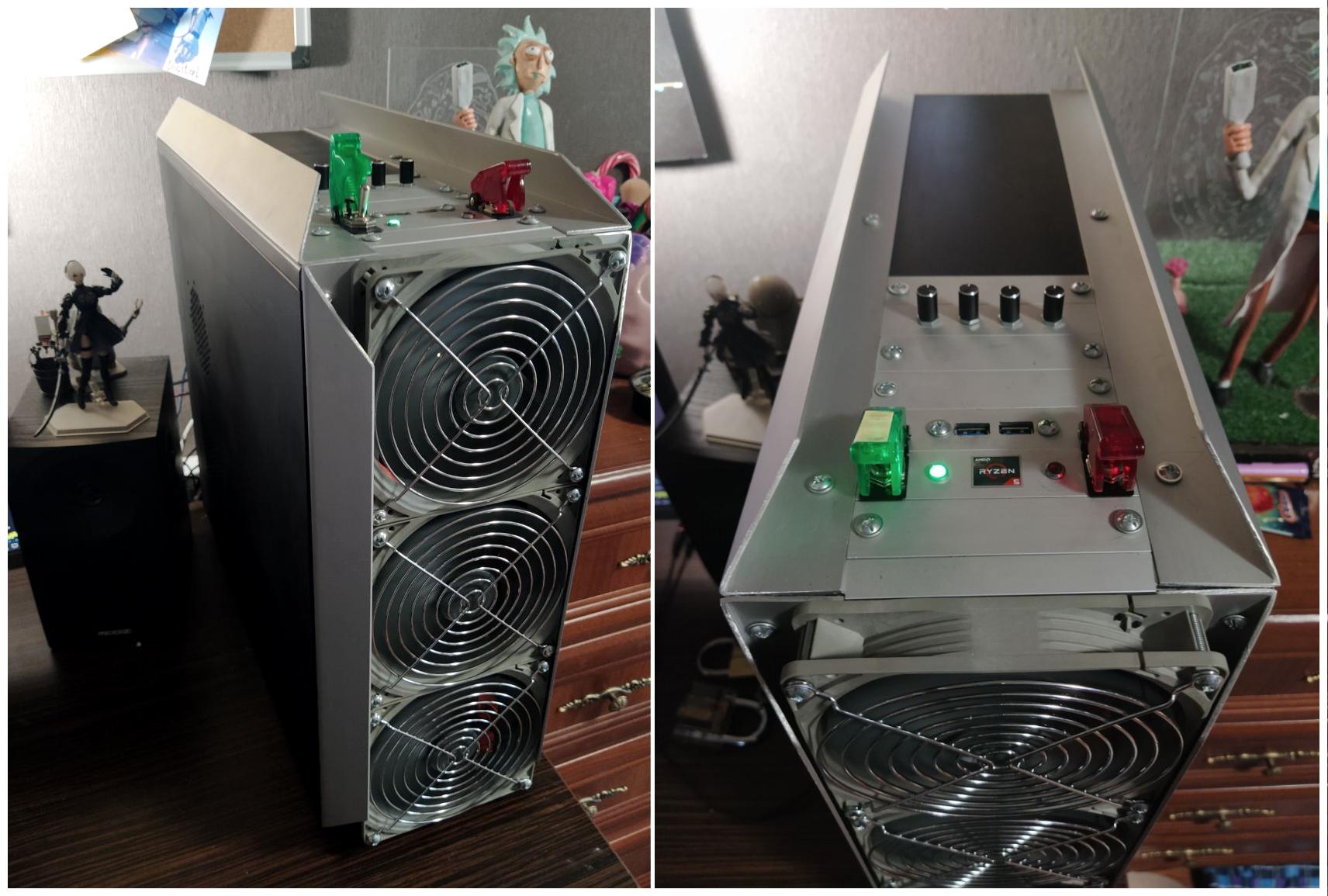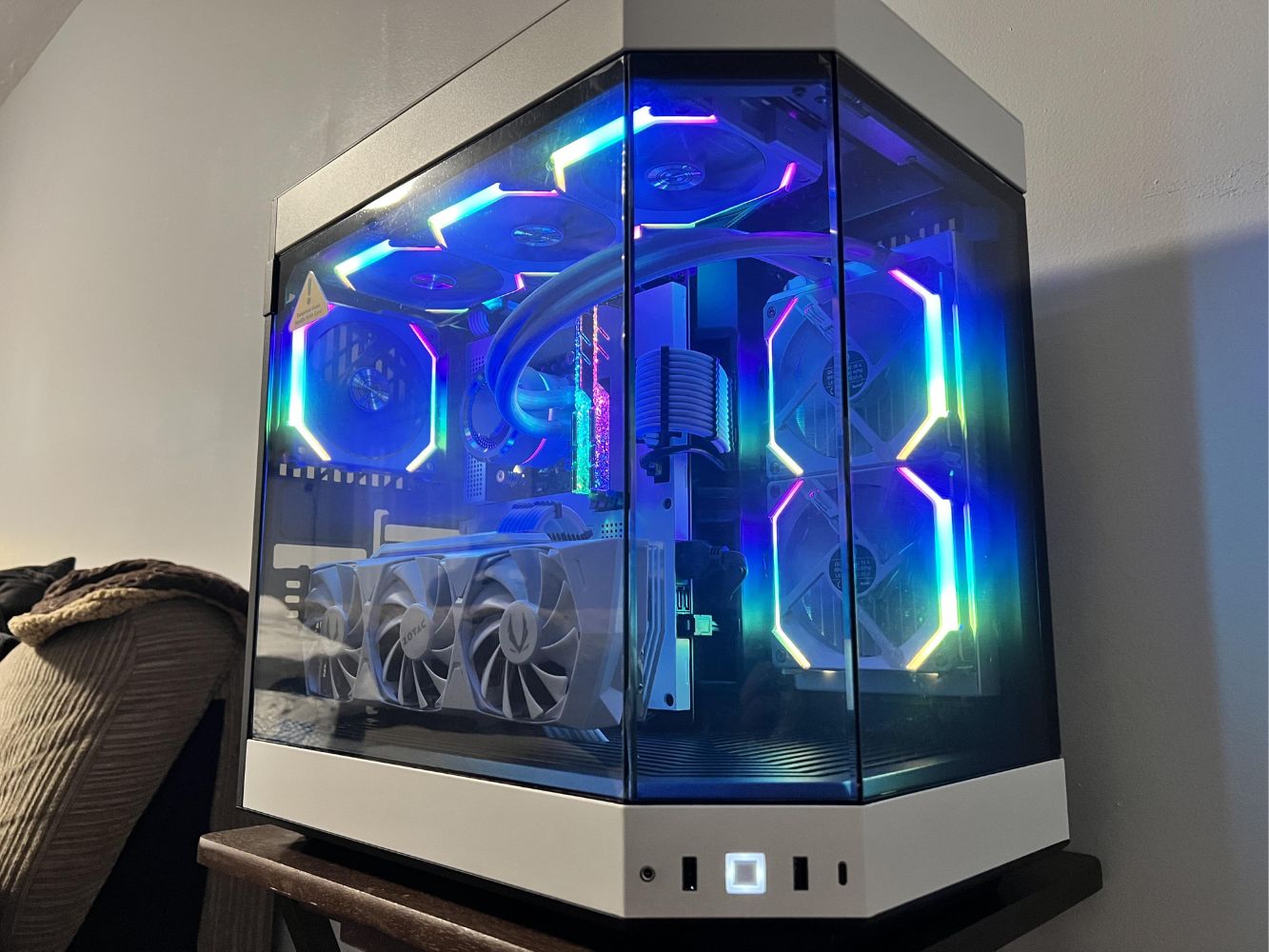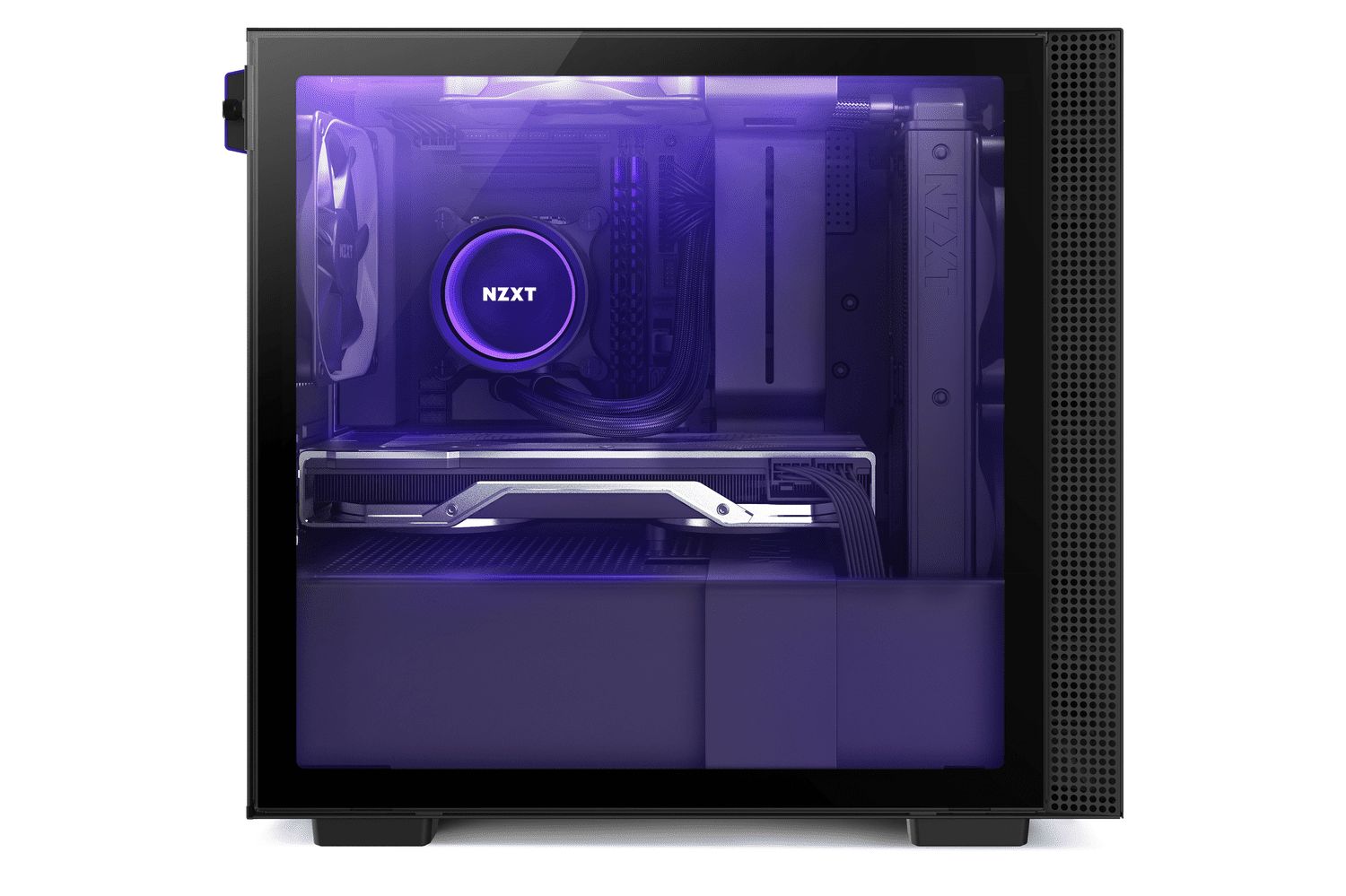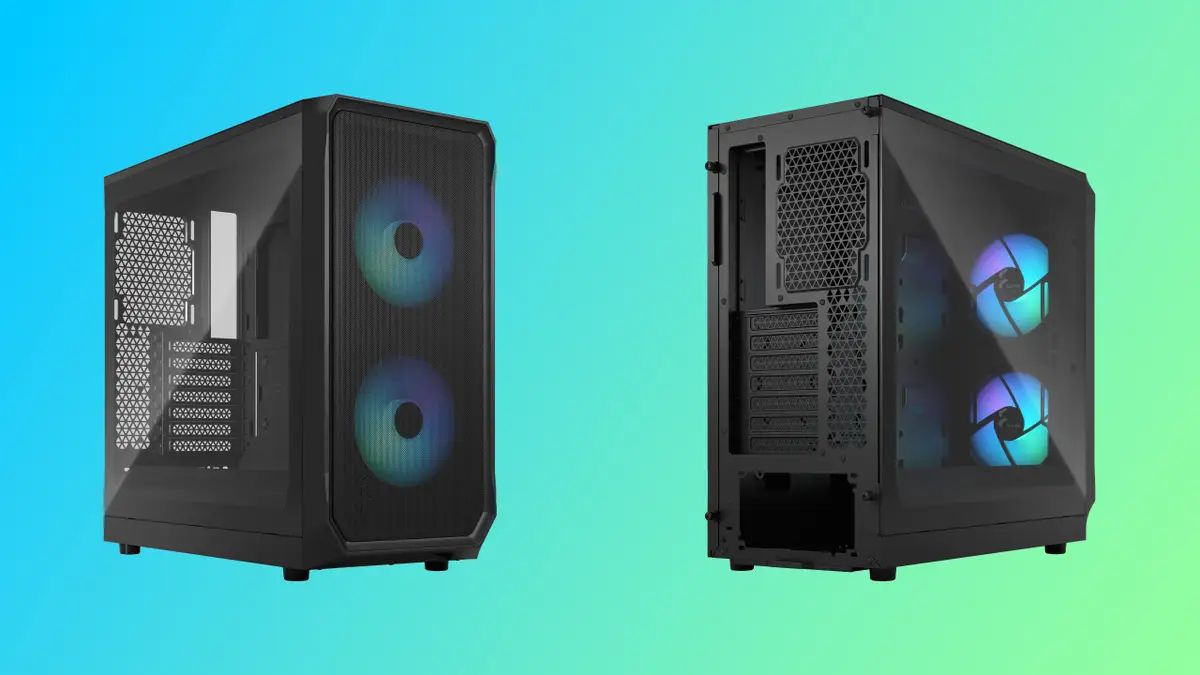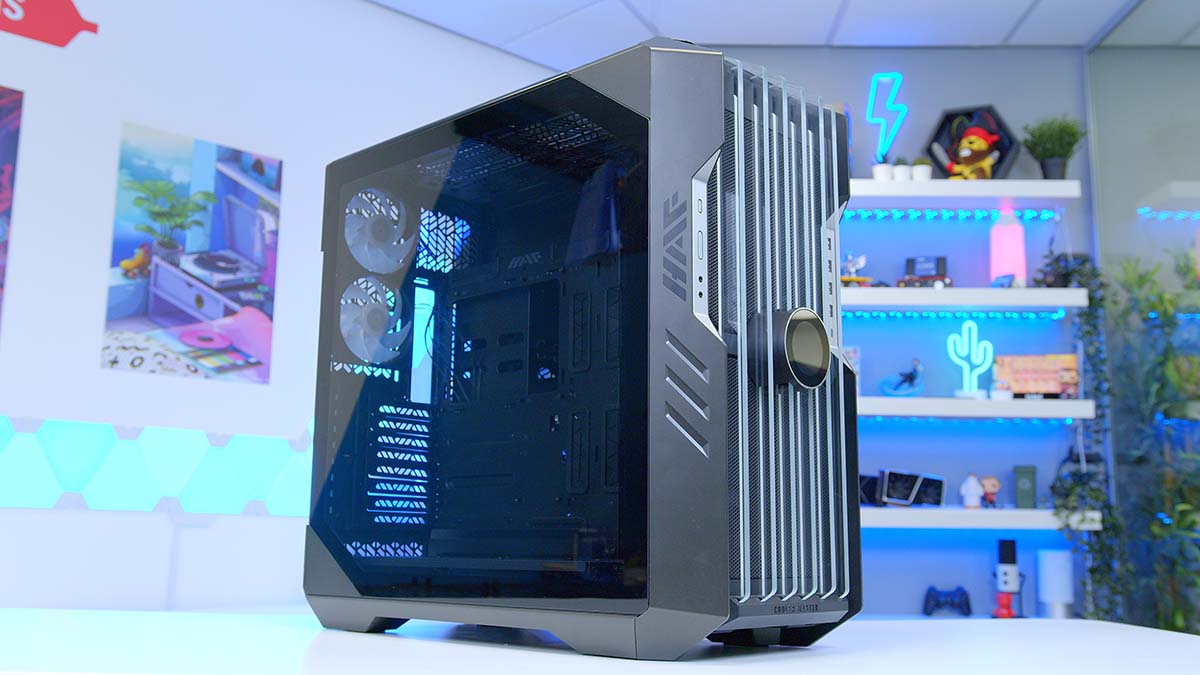Introduction
Welcome to the world of custom PC building, where you have the freedom to create a computer case that perfectly matches your style, preferences, and performance needs. Building a custom PC case is a thrilling venture that allows you to showcase your creativity and technical skills. Not only will it provide a personalized touch to your computer setup, but it also opens up a realm of possibilities for customization and future upgrades.
When it comes to building a custom PC case, there are a few key factors to consider. Firstly, you need to choose the right components that will fit your desired case design and deliver the performance you desire. Secondly, planning the case design and ensuring proper measurements will help you achieve a seamless and professional look.
This article will guide you through the process of building a custom PC case, from choosing the right components to wiring and cable management. So, let’s dive in and explore the exciting journey of creating a unique PC case that reflects your individuality and enhances your computing experience.
But before we jump into the specifics, it’s important to note that building a custom PC case requires some technical skills and knowledge. If you’re new to PC building or not comfortable with working with tools and electronics, it may be best to start with pre-built cases or seek assistance from an experienced builder.
Choosing the Right Components
When it comes to building a custom PC case, the first step is to choose the right components that will act as the building blocks for your case design. These components include the motherboard, CPU, RAM, storage devices, graphics card, power supply, and cooling system.
Before making any decisions, it’s essential to consider your specific needs and requirements. Are you building a gaming PC that requires high-performance components, or is it a workstation PC that will focus on tasks like video editing or 3D rendering? Understanding your usage and performance needs will help you make informed choices.
Start by selecting a motherboard that is compatible with your chosen CPU, as it will serve as the foundation for all other components. Consider factors such as the socket type, form factor, and available expansion slots. Match it with a powerful and compatible CPU that suits your usage requirements.
The next crucial component is the RAM. Choose a sufficient amount of RAM to ensure smooth multitasking and efficient performance. Additionally, select storage devices, such as SSDs or HDDs, based on your storage needs.
If you’re a gamer or plan to work with graphic-intensive applications, invest in a powerful graphics card that can handle your desired resolution and graphics settings. It’s also important to keep in mind the power requirements of the graphics card and choose a compatible power supply unit.
Lastly, don’t overlook the cooling system. Depending on your case design and intended usage, you can opt for air cooling or liquid cooling solutions. Consider factors such as noise level, thermal performance, and compatibility with your case and components.
Remember, each component you choose should be compatible with one another and fit within your desired case design. Research extensively, read user reviews, and seek advice from experts to ensure you make informed choices. With the right components in hand, you’re one step closer to building your dream custom PC case.
Planning the Case Design
Once you have selected your components, the next step in building a custom PC case is to plan the design. This is where your creativity will come into play as you envision and sketch out the look and layout of your case.
Start by considering the size and dimensions of your components and determine the overall size of the case. Will it be a compact and portable case or a larger, more spacious one? Keep in mind the available space on your desk or workstation.
Think about the placement of components within the case. Where will the motherboard, CPU, and RAM be positioned? How will the storage devices and graphics card be integrated into the design? Consider cable management and airflow to ensure optimal cooling and efficient operation.
Sketch out the layout of the case, including cutouts for ports, buttons, and connectors. Visualize the placement of fans or radiators for the cooling system. You can also think about incorporating additional design elements, such as transparent side panels or LED lighting, to enhance the aesthetic appeal of your case.
Keep in mind that functionality should take precedence over aesthetics. While it’s important to create a visually appealing case, the design should also prioritize easy access to components for maintenance and upgrades.
Consider the materials you want to use for building your case. Popular choices include aluminum, steel, or acrylic. Each material has its own advantages and considerations, such as strength, weight, and ease of customization.
Research existing custom case designs and draw inspiration from them, but also challenge yourself to come up with unique and innovative ideas. The design should reflect your personal style and preferences, making the case truly yours.
Lastly, it’s a good idea to create a detailed plan, including measurements and specifications, before you start gathering the necessary tools and materials. This will save you time and help ensure a smoother building process.
Take your time during the planning phase, as it forms the foundation for the rest of the building process. With a well-thought-out design in place, you’ll be ready to move on to the next steps of building your custom PC case.
Gathering the Tools and Materials
Now that you have a clear design plan, it’s time to gather all the necessary tools and materials for building your custom PC case. Having the right tools and materials at hand will make the construction process smoother and more efficient.
Here are some essential tools you may need:
- Screwdrivers: Ensure you have a set of screwdrivers with various sizes and types, including Phillips and flathead screwdrivers. These will be useful for securing components and attaching panels.
- Measuring tools: Accurate measurements are crucial when building a custom PC case. Have a measuring tape, ruler, and calipers on hand to ensure precise cuts and placements.
- Power tools: Depending on the materials you’re working with, you may need power tools like a drill, jigsaw, or dremel tool for cutting and shaping the case panels.
- Adhesive: Adhesive or epoxy may be needed for securing certain components or attaching panels together. Make sure you have a reliable adhesive suitable for the materials you’re working with.
- Cable management tools: Velcro straps, zip ties, and cable clips will help keep your cables organized and prevent them from obstructing airflow or causing a messy interior.
- Protective gear: Safety should always be a priority. Wear safety goggles, gloves, and a dust mask to protect yourself from debris and potential hazards.
Now, let’s talk about the materials you’ll need:
- Case frame material: Choose a material that suits your design and offers the desired level of durability and strength. Common materials include aluminum, steel, or acrylic.
- Case panels: Depending on your design, you may need materials for the front, back, top, and side panels of your case. These can be made from the same material as the frame or a different material for added visual interest.
- Screws and fasteners: Have a variety of screws and fasteners in different sizes on hand to secure components and panels.
- Decorative elements: If you’re interested in adding a personal touch, consider materials for custom accents or design elements, such as vinyl decals, custom laser-cut designs, or LED lighting strips.
Research local hardware stores, online retailers, or specialty PC modding shops to find the tools and materials you need for your custom PC case project. Check reviews and compare prices to ensure you get quality products at a reasonable cost.
By gathering all the necessary tools and materials before you start building, you’ll be well-prepared and ready to bring your custom PC case design to life!
Measuring and Cutting the Panels
With the tools and materials in hand, it’s time to move on to the next step of building your custom PC case: measuring and cutting the panels. This is a critical step that requires precision and accuracy to ensure your case comes together perfectly.
Start by referring to your design plan and measurements to determine the dimensions of each panel. Use a measuring tape, ruler, or calipers to accurately measure the length, width, and thickness of the panels you need to cut.
When measuring, double-check your measurements to ensure accuracy. It’s always better to measure twice and cut once to avoid any costly mistakes or wasted materials.
Once you have your measurements, it’s time to mark the panels. Use a pencil or a marker to clearly mark the dimensions on the material you’re working with. Marking both sides of the material can be helpful, especially if you’re cutting through a thick material where the marks on one side may not be visible from the other.
Next, using the appropriate power tools like a jigsaw or a dremel tool, carefully cut along the marked lines. Take your time and use a steady hand to ensure clean and precise cuts. If possible, clamp the material down to a workbench or use a cutting guide to help maintain straight edges.
Remember to wear protective gear such as safety goggles and a dust mask while cutting to protect yourself from any flying debris or dust particles.
Once you’ve cut the panels, use sandpaper or a file to smooth out any rough edges or sharp corners. This will not only enhance the overall aesthetic of your case but also prevent any potential injuries during the assembly process.
It’s important to note that if you’re working with certain materials like acrylic or tempered glass, special care should be taken to avoid causing cracks or scratches. Consider using tools specifically designed for cutting or scoring those materials.
Throughout the measuring and cutting process, it’s crucial to maintain precision and attention to detail. Any errors or inaccuracies at this stage can lead to difficulties during the assembly or compromised structural integrity of the finished case.
By taking the time to measure accurately and cutting with care, you’ll be well on your way to creating custom panels that perfectly fit your design and bring your vision to life.
Drilling Holes for Components
Now that you have your panels cut and ready, the next step in building your custom PC case is to drill holes for the components. This step is crucial for proper installation and placement of various hardware components.
Start by referring to your design plan and identifying the locations where holes are needed. Consider the motherboard, graphics card, power supply, cooling fans, and any other components that require attachment to the case.
Before you start drilling, ensure that you have the appropriate drill bits for the material you are working with. Different materials may require different types of bits, such as metal drill bits for steel or aluminum panels, and glass or tile drill bits for acrylic or tempered glass panels.
Once you have the right drill bits, mark the positions of the holes on the panels using a pencil or a marker. Double-check the measurements and make sure the markings are accurate, as any mistakes at this stage can seriously affect the functionality and aesthetics of your custom case.
When drilling, use slow and steady pressure to avoid damaging the material. Start with a smaller drill bit to create a pilot hole, then gradually increase the size to match the diameter required for the specific component or screw. Take your time and let the drill do the work, ensuring you have a firm grip on the panel to prevent slipping or movement.
Remember to wear protective gear such as safety goggles and gloves while drilling to protect yourself from any potential debris or injuries.
After drilling the holes, carefully clean up any metal shavings or plastic particles that may have accumulated. You can use a soft brush or compressed air to remove any residue from the holes and panel surface. This will help ensure a clean and professional-looking installation.
Once all the necessary holes are drilled, test-fit each component to ensure a proper fit. Check the alignment and positioning, and make any necessary adjustments if needed. If there are any issues, you may need to re-drill or enlarge the holes as required.
By taking the time to drill the holes accurately and cleanly, you’ll ensure that all your components fit snugly and securely in your custom case, creating a solid foundation for your PC build.
Preparing the Motherboard Tray
The motherboard tray is a crucial component of your custom PC case, as it provides support and proper positioning for your motherboard. Preparing the motherboard tray involves ensuring that it fits securely in your case and provides the necessary cutouts and mounting points for your motherboard and other components.
Start by assessing the dimensions of your motherboard and comparing them to the size of the motherboard tray. If needed, make any adjustments to the size or shape of the tray to ensure a perfect fit. This may involve trimming or resizing the tray using appropriate tools like a jigsaw or file.
Next, consider the cutouts and mounting points needed for the motherboard. These include holes for screwing in standoffs or spacers that elevate the motherboard from the tray, as well as cutouts for the I/O shield and other connectors on the rear of the motherboard.
Refer to the specifications and manual of your motherboard to determine the exact positions of these cutouts and mounting points. Transfer these measurements onto the motherboard tray using a pencil or marker, ensuring accuracy and precision.
Using the appropriate tools, such as a drill and hole saw or a jigsaw, carefully cut out the marked areas on the motherboard tray. Take your time and follow the lines as closely as possible to ensure clean and accurate cutouts. Use a round file or sandpaper to smooth out any rough edges after cutting.
Once the cutouts are done, attach the necessary standoffs or spacers on the tray using screws to match the mounting holes on the motherboard. Ensure that they are securely fastened, as they will provide the necessary support and stability for the motherboard.
Finally, install the I/O shield into the corresponding cutout on the rear of the tray. The I/O shield provides a neat and flush interface between the motherboard’s ports and the back of the case.
By properly preparing the motherboard tray, you’ll ensure that your motherboard fits securely and functions optimally within your custom case. The tray provides the foundation for the rest of your components and allows for effortless installation and future upgrades. Take your time during this step to achieve a clean and professional result.
Assembling the Case Frame
With the necessary preparations done, it’s time to move on to the exciting step of assembling the case frame. The case frame provides the structural integrity and stability for your custom PC case, ensuring that all the components are securely housed.
Start by gathering the frame materials, such as aluminum or steel panels, along with the appropriate screws or fasteners. Refer to your design plan and arrange the panels in the desired order, ensuring that they align correctly.
Using the appropriate screwdrivers or power tools, begin attaching the panels to form the frame. Securely fasten each panel together, making sure that they are flush and even. It’s important to follow the correct order and sequence as per your design, ensuring that the frame is sturdy and stable.
If required, use clamps or other tools to hold the panels in place while you attach them. This will help maintain alignment and ensure a precise fit.
During the assembly process, periodically check for any gaps or misalignments and make adjustments as necessary. This will help ensure a seamless and professional-looking case frame.
Once the frame is assembled, check for any wobbling or instability. If there are any issues, double-check the joints, screws, or fasteners and make sure they are tightened securely.
Remember to take your time during the assembly process and pay attention to detail. Rushing through this step can result in incorrect alignments or loose connections, compromising the overall stability of your case.
Throughout the assembly, refer back to your design plan and visualized layout to ensure that the frame is coming together as intended. Make any necessary adjustments or modifications to the frame design if needed, while keeping the overall structure intact.
By properly assembling the case frame, you are creating a solid and reliable foundation for the rest of your custom PC case. A well-built and sturdy frame will not only protect your components but also provide a professional and visually appealing look to your finished case.
Attaching Panels and Components
With the case frame assembled, the next step in building your custom PC case is attaching the panels and components. This is where your design plan and careful measurements come into play to ensure a seamless and functional interior.
Start by referencing your design plan to determine the order in which the panels should be attached. Begin with the larger, main panels, such as the front, back, and top panels, and work your way towards the smaller ones.
Attach each panel to the frame using the appropriate screws or fasteners. Ensure that each panel is aligned properly and fits snugly against the frame. Use a screwdriver or power tool to tighten the screws securely, but be careful not to overtighten and damage the panels or the frame.
During the panel attachment process, periodically check for any gaps or misalignments. Make adjustments as necessary to ensure a uniform and flush fit between the panels and frame. This will provide a clean and professional look to your custom case.
Once the panels are securely attached, it’s time to install the components. Begin with the motherboard, carefully placing it onto the pre-installed standoffs or spacers on the motherboard tray. Ensure that it aligns with the I/O shield and that the screw holes on the motherboard line up with the standoffs.
Secure the motherboard in place using the provided screws, being mindful not to overtighten. Ensure that the motherboard is stable and securely mounted, as it is the central component of your PC build.
Continue by installing the rest of the components, such as the CPU, RAM, graphics card, and storage devices. Refer to the manuals or instructions provided with each component for proper installation steps and precautions.
Pay attention to cable management during the installation process. Route cables neatly and ensure that they do not obstruct airflow or interfere with other components. Use cable ties or clips to secure and organize the cables, creating a clean and organized interior.
Check that all components are securely attached and properly connected. Double-check the power connections, data cables, and any other necessary connections to ensure that everything is in place.
Finally, power on your custom PC to verify that all components are functioning correctly. Test the system, check for any errors or issues, and make any necessary adjustments if required.
By carefully attaching panels and components, you will create a functional and visually appealing custom PC case. Take your time to ensure accuracy and precision, as it will result in a well-built and efficient system that meets your needs and reflects your personal style.
Wiring and Cable Management
Wiring and cable management are crucial steps in building a custom PC case. Properly organizing and managing the cables not only improves the overall aesthetics of your case, but also ensures optimal airflow and reduces the risk of cable damage or interference with other components.
Start by planning the cable routes before you start wiring. Visualize the path that each cable will take from the power supply to the corresponding component. Consider the length of the cables and the proximity of each component to the power supply.
Begin by connecting the power supply to the motherboard, ensuring that all necessary cables, such as the 24-pin main power connector and the CPU power connector, are securely connected. Tuck away any excess cable length to keep the interior clean and uncluttered.
Continue by connecting the data cables, such as SATA cables for storage devices and HDMI/DVI cables for the graphics card. Route the cables neatly and away from any fans or heat-generating components.
Use cable ties, Velcro straps, or cable clips to secure the cables and keep them organized. Group cables of similar types together to further simplify cable management. Consider using cable combs or cable sleeves to create a more uniform and streamlined appearance.
Avoid tightly bending or twisting cables, as this can lead to signal interference or damage. Instead, use gentle curves and ensure that there is enough slack to allow for any future component replacements or upgrades.
Inspect the wiring and cables periodically, making sure that they are not obstructing airflow or interfering with the operation of other components. Adjust the cables as necessary to maintain an organized and tidy interior.
Take advantage of any cable management features provided in your case, such as built-in cable routing channels or hidden compartments. These features can help conceal cables and create a cleaner overall look.
Finally, double-check all cable connections to ensure that they are secure and properly seated. Loose or improperly connected cables can cause system instability or malfunctions.
By dedicating time and effort to proper wiring and cable management, you will not only enhance the appearance of your custom PC case but also improve its functionality and longevity. A well-organized interior allows for better airflow, easier maintenance, and a more enjoyable computing experience.
Installing Cooling System
The cooling system is a vital component in your custom PC case, as it helps regulate the temperature of the internal components and ensures optimal performance and longevity. Proper installation of the cooling system is crucial to maintain a stable and cool operating environment for your PC.
Before you begin, determine the type of cooling system you will be using, whether it’s air cooling or liquid cooling. Each type has its own installation process and requirements.
If you are using an air cooling system, start by installing the CPU cooler. Position the CPU cooler onto the CPU, ensuring that it aligns correctly with the mounting holes on the motherboard. Apply an appropriate amount of thermal paste on the CPU before attaching the cooler. Secure the cooler in place using the provided screws or mounting brackets, following the instructions provided by the manufacturer.
Next, install case fans for additional airflow. Identify the optimal placement for the fans based on your case design and airflow requirements. Typically, fans are installed on the front, back, and top panels of the case. Use screws to secure the fans, ensuring that they are aligned properly. Connect the fan power cables to the motherboard or fan controller.
If you have chosen a liquid cooling system, the installation process may be more intricate. Begin by ensuring that your case has sufficient space and mounting points for the radiator and fans. Mount the radiator in the designated area, using screws or brackets to secure it in place.
Install the water block or pump onto the CPU, following the manufacturer’s instructions. Use thermal paste to ensure proper heat transfer between the CPU and the water block. Connect the water block and pump to the cooling loops or tubes, making sure they are properly connected and leak-free.
For both air and liquid cooling systems, properly manage the cables and tubes to ensure they don’t obstruct airflow or interfere with other components. Use zip ties, clamps, or cable clips to secure and route the cables and tubes neatly. This will help maintain a clean and organized interior.
Once the cooling system is installed, double-check all connections and make sure they are secure. Power on your PC and monitor the temperatures using appropriate software or hardware monitoring tools. Make any necessary adjustments, such as fan speed control or radiator placement, to ensure optimal cooling performance.
Regularly clean and maintain your cooling system to keep it operating efficiently. Remove dust and debris from fans and radiators, and periodically check for any signs of leaks or blockages.
By installing a reliable and effective cooling system, you will provide the necessary cooling for your components, allowing for prolonged and stable operation. Optimal temperatures ensure better performance, longer lifespan, and a more enjoyable computing experience.
Powering Up and Testing the PC
After all the components are installed and the cooling system is in place, it’s time to power up your custom PC and perform essential tests to ensure everything is functioning as expected. This step is crucial to verify the stability and performance of your PC build.
Before you press the power button, double-check all the connections, including power cables, data cables, and any other peripheral devices. Ensure that everything is securely connected and properly seated.
Once you are confident that all connections are in order, it’s time to power on your PC. Press the power button and allow the system to boot up. Listen for any unusual noises, such as grinding or rattling, which could indicate a hardware issue.
During the boot-up process, monitor the screen for any error messages or abnormal behavior. Check that the motherboard, CPU, RAM, and other components are properly recognized and detected by the system.
Enter the BIOS or UEFI settings to verify that all the hardware settings are correct. Ensure that the CPU is running at the expected clock speed, the RAM is set to the correct frequency, and all other settings align with your component specifications.
After confirming that the basic system functions are working correctly, proceed to test the individual components. Run stress tests or benchmarking software to evaluate the performance and stability of the CPU, GPU, and RAM. Monitor temperatures during these tests to ensure that the cooling system is effectively maintaining optimal temperatures.
Test the functionality of all peripheral devices, such as the keyboard, mouse, and audio system. Ensure that they are properly recognized by the system and perform as expected.
Test the storage devices by copying, accessing, or transferring files to ensure their proper functioning and performance. Check that all data connections are secure, and the drive is being detected by the system.
Run software tests and perform tasks relevant to your specific usage requirements, such as gaming, video editing, or rendering. Monitor the system performance, and check for any errors or issues that may arise.
Keep an eye out for any abnormal behavior, unexpected system crashes, or unusual temperature spikes during the testing phase. These could indicate potential hardware or software issues that need to be addressed.
Make any necessary adjustments to the BIOS or UEFI settings based on your testing results, such as adjusting fan curves, enabling XMP profiles for RAM, or optimizing power settings. Ensure that the system is stable and reliable in your desired usage scenarios.
By thoroughly testing your custom PC, you will gain confidence in its performance, stability, and compatibility. Any issues or inconsistencies can be identified and addressed early on, ensuring a smooth and enjoyable computing experience.
Conclusion
Congratulations on successfully building your custom PC case! It has been an exciting journey filled with creativity, technical skills, and attention to detail. By following the steps outlined in this guide, you have created a unique and personalized computer case that reflects your style and meets your performance needs.
Throughout the process, you learned the importance of choosing the right components that fit your design and requirements. You mastered the art of planning and measuring to ensure precise cuts and accurate panel placement. You carefully assembled the case frame, attached panels and components, and managed the wiring and cables for a clean and organized interior. Finally, you installed a reliable cooling system and thoroughly tested your PC to ensure stable performance.
Building a custom PC case is not only a rewarding experience, but it also offers the advantage of customization and future upgradability. You have the freedom to modify or enhance your case as your needs evolve, whether it’s adding more storage, upgrading the CPU or graphics card, or changing the cooling system.
Remember to regularly clean and maintain your PC case. Keep an eye on dust accumulation, clean fans and radiators, and periodically check for any loose connections or signs of wear and tear. This will ensure that your custom PC case continues to function optimally and look great for years to come.
We hope that this guide has provided you with the necessary knowledge and inspiration to embark on your custom PC case building journey. Building a custom case not only showcases your creativity, but it also allows you to have a PC that is unique and tailored to your preferences. Enjoy your new custom PC case and the enhanced computing experience it brings!







